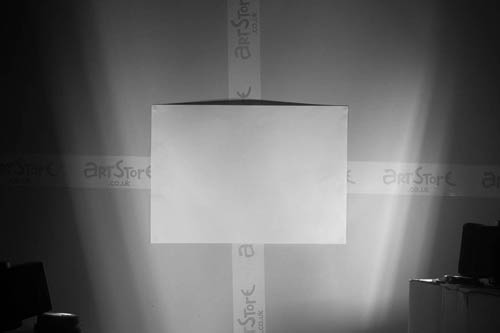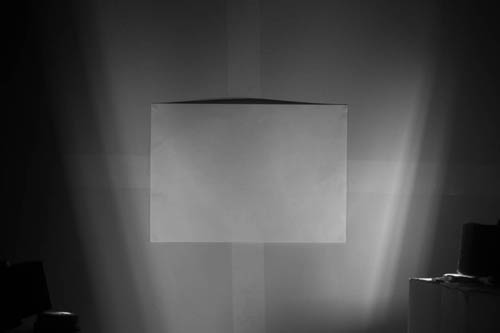Taking some more infrared photos with my Fuji camera recently, I wondered how other Fuji lenses performed for infrared work. There is actually quite a bit of information on this available on the web: Infrared performance of Fujifilm X Mount Lenses and Lens Hotspot Performance (scroll down to find the Fuji lens section).
However, looking for this information reminded me that I had run some tests shortly after I got my Fuji X-M1 back from being full spectrum converted. And it seems I never published the results of these tests to the web. So that's what I intend to do in this post.
The tests look at whether the lens has a visible IR hotspot, and how much UV it will pass (for ultraviolet photography). I also looked at focus shift for IR and UV photography, i.e. if you focus in visible light, does the focus shift when the photo is taken in IR or UV.
Lenses tested:
- 80mm f/5.6 EL-Nikkor
- Fuji 50-230mm at 50mm
- Fuji 50-230mm at 230mm
- 50mm f/2.8 EL-Nikkor
- Fuji 27mm
- Fuji 16-50mm at 16mm
- Fuji 16-50mm at 50mm
- Nikon 70-300mm VR at 70mm
- Nikon 70-300mm VR at ~200mm
For the hotspot and exposure tests I used a piece of card with tape running across the centre vertically and horizontally. In the centre I stuck a piece of A4 paper. This was illuminated by two full spectrum modified Vivitar 283 flashes. The flash power was kept the same (low power) for each visible light and infrared photo, while the flashes were put on full power for the UV photos.
ISO and aperture were changed where necessary (the UV photos) for a reasonable exposure. I've noted below each image if the ISO was set to anything other than ISO 200.
For the focus shift tests I used a metal ruler with the camera at an angle. This was lit by two full spectrum modified Vivitar 283 flashes, placed quite close to the ruler. A couple of pieces of white foam were used to try and bounce as much light as possible from the flashes onto the ruler.
The flashes were set around minimum power for the visible light and infrared photos, and max power for the UV shots. ISO was adjusted as necessary for the UV shots but aperture was kept constant. Most of the ruler images are crops, to make it easier to see the focus shift.
80mm f/5.6 EL-Nikkor
IR hotspot and UV transmittance
No hotspot in IR. This lens is known for being pretty good in the amount of UV it passes.
IR and UV focus shift, f/5.6
The 80mm EL-Nikkor has a slight shift backwards in focus for both UV and IR.
Fuji 50-230mm at 50mm
IR hotspot and UV transmittance
No IR hotspot, but the lens passes very little UV.
IR and UV focus shift, f/4.5
At 50mm the Fuji lens shifts focus backwards in both IR and UV.
Fuji 50-230mm at 230mm
IR hotspot and UV transmittance
Performance is the same as at the wide end, except we have an even smaller maximum aperture. No hotspot in IR, but very little UV light is passed.
IR and UV focus shift, f/6.7

UV ISO 400 and +3EV in RAW (ISO 3200 equiv)
I think I may have messed up this test as it looks like the focus shifts slightly backwards in IR, with a larger shift forward in UV. While that's possible, it seems unlikely. Unfortunately I've now sold this lens, so I can't retest it.
50mm f/2.8 EL-Nikkor
IR hotspot and UV transmittance
Interestingly the 50mm f/2.8 EL-Nikkor is showing an IR hotspot here, something I haven't noticed in actual usage. It's pretty good at passing UV, maybe 1 stop worse than the 80mm f/5.6 EL-Nikkor when both are set to f/5.6.
IR and UV focus shift, f/5.6
A small shift backwards in focus for IR and UV.
Fuji 27mm
IR hotspot and UV transmittance
The Fuji 27mm f/2.8 pancake lens has a nasty IR hotspot. The big surprise is how much UV this lens passes. It's not as good as the 80mm EL-Nikkor, but much better than the vast majority of lenses. There appears to be a very slight UV hotspot.
As far as I'm aware this lens is effectively the widest angle lens that is suitable for ultraviolet photography. There are also the Noflexar 35mm f/3.5 macro and Petri 35mm f/3.5 lenses (amongst others) suitable for UV photography. With a full frame converted camera they would give the same field of view as the Fuji 27mm lens. But for the Fuji cameras, with their APS-C sized sensors, the 27mm lens seems to be the widest UV capable focal length available.
After doing some more research, it seems that the Sony E-mount APS-C 16mm and 20mm prime lenses both pass enough UV for good results: Sony 20mm F2.8 – UV test. I would guess that pancake lenses have much simpler designs than standard lenses, and the simpler designs (maybe no cemented elements?) mean they are more likely to pass UV.
IR and UV focus shift, f/4.5
While the 27mm may be very good (for a normal lens) at passing UV light, it has a very large focus shift backwards in UV, as well as a big focus shift backwards in IR.
In bright sunlight the lens can autofocus in UV (though I'm not 100% convinced it's as accurate as visible light focusing). You can also manual focus using liveview in bright sunlight. But this tends to be pretty tricky due to the high ISO and low 'shutter speed' used to get a visible liveview preview in UV.
Fuji 16-50mm at 16mm
IR hotspot and UV transmittance
At 16mm we don't see any visible IR hotspot. I know from further use the lens does have an IR hotspot, but it is quite weak and not problematic. Not surprisingly the lens is pretty useless in terms of UV transmission.
IR and UV focus shift, f/5.6
We see the typical IR focus shift further back. What's interesting is that there is very little shift in UV. If anything the focus shifts slightly forward with UV, rather than shifting back as with other lenses. This small amount of UV focus shift does not make the lens suitable for UV work though due to the very small amount of UV that the lens passes.
Fuji 16-50mm at 50mm
IR hotspot and UV transmittance
At 50mm there's no IR hotspot visible either and UV performance remains the same.
IR and UV focus shift, f/5.6
Performance at 50mm is very similar to 16mm - focus shifts back in infrared, with maybe a slight shift closer in UV.
Nikon 70-300mm VR at 70mm
IR hotspot and UV transmittance
There's no IR hotspot visible. UV performance isn't very good. (The lens was used via an adapter and the brightness at the edges of the UV image indicates IR and Visible light leakage caused by the adapter).
I didn't test this lens for focus shift.
Nikon 70-300mm VR at ~200mm
IR hotspot and UV transmittance
Performance is pretty much the same as at 70mm.
So, it seems only the enlarger lenses are really suitable for Vis, UV, and IR photography. The Fuji 27mm is a very nice surprise in its UV sensitivity, but very disappointing in its IR performance due to the well defined hotspot. The other lenses are much of a muchness. They perform okay in IR, but have very poor UV performance.
















































Hi, I am not sure what shutter speeds you used to take the pictures, maybe it is too slow for any practical uses? All pictures taken with the modified Fuji X-M1?
Hi Leong
The shutter speed was 1/100s or 1/160s, however the images were all lit by flash, so the shutter speed wasn’t a factor in determing the exposure. If you’re relying on sunlight, the shutter speed is fine for IR photography. However, for UV photography using sunlight, then even at high ISO and with a lens that passes a decent amount of UV (like the Fuji 27mm) you can’t really get a hand-holdable shutter speed. Using a tripod may help, but it depends on whether your subject is moving or not. For things like flowers, I find they get blown about too much in the wind and will end up blurry. So I use a flash that outputs UV rather than relying on sunlight for the light source, and then that lets me use a faster shutter speed.
Yes, all the images were taken with the full spectrum modified Fuji X-M1.
Regards
Dave